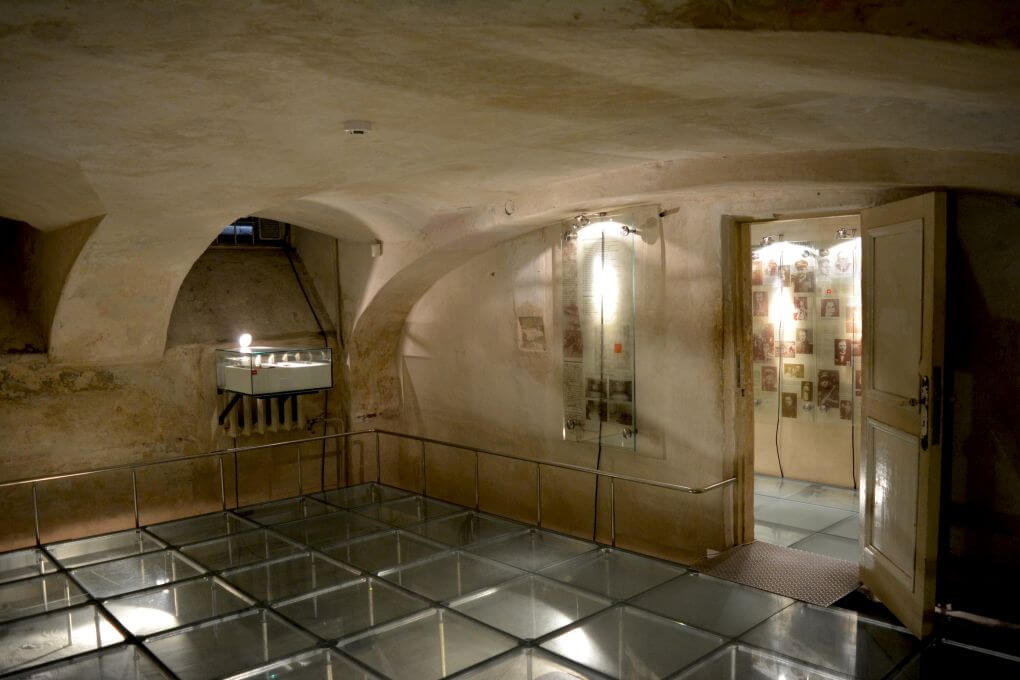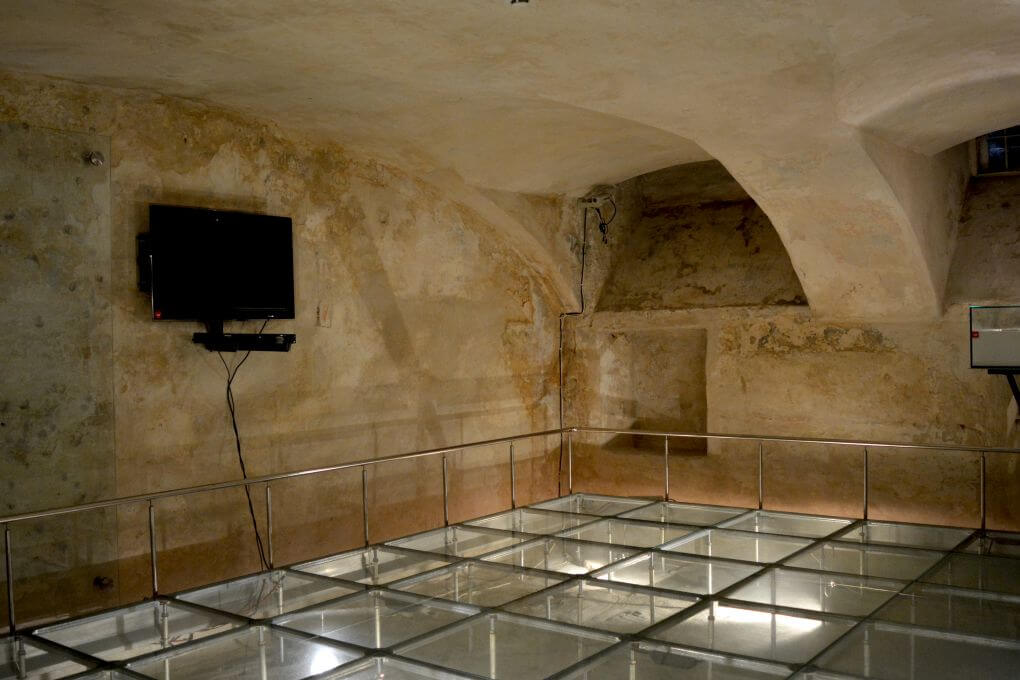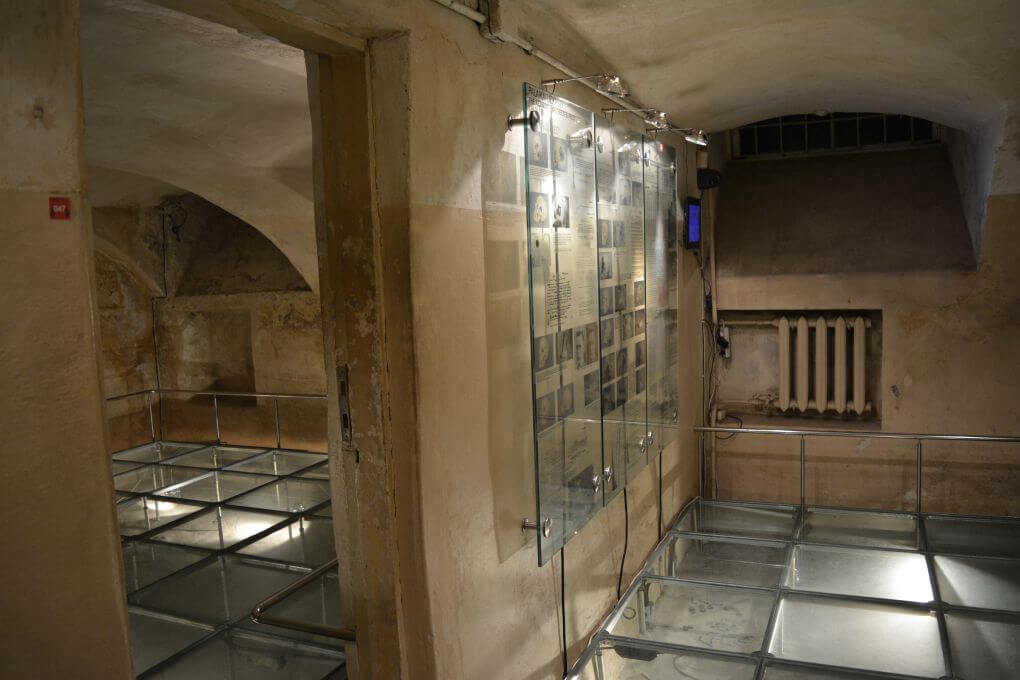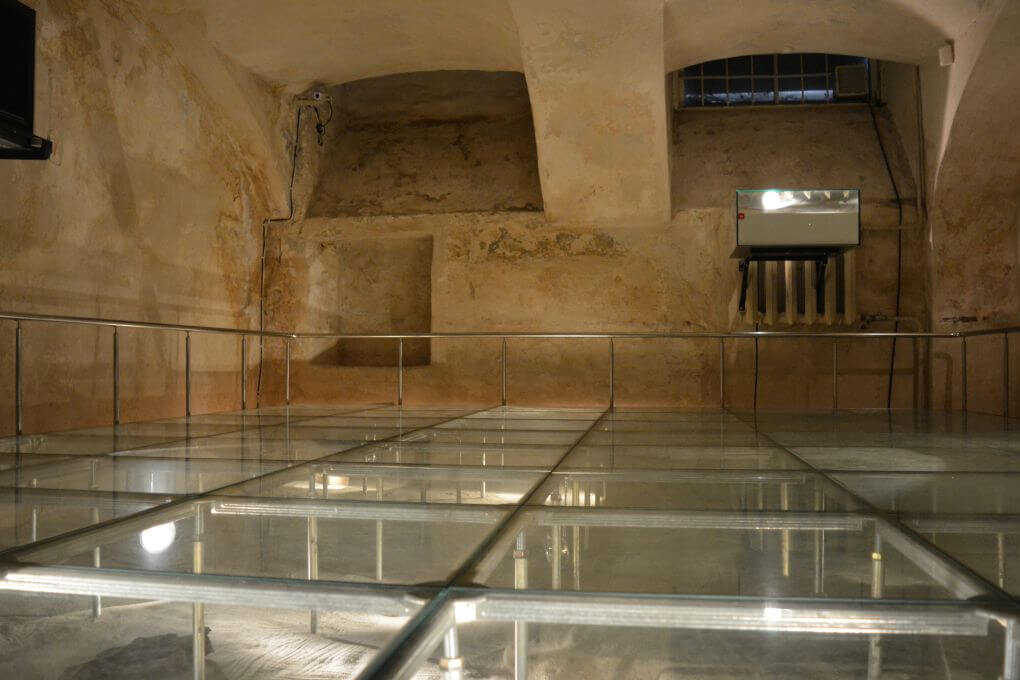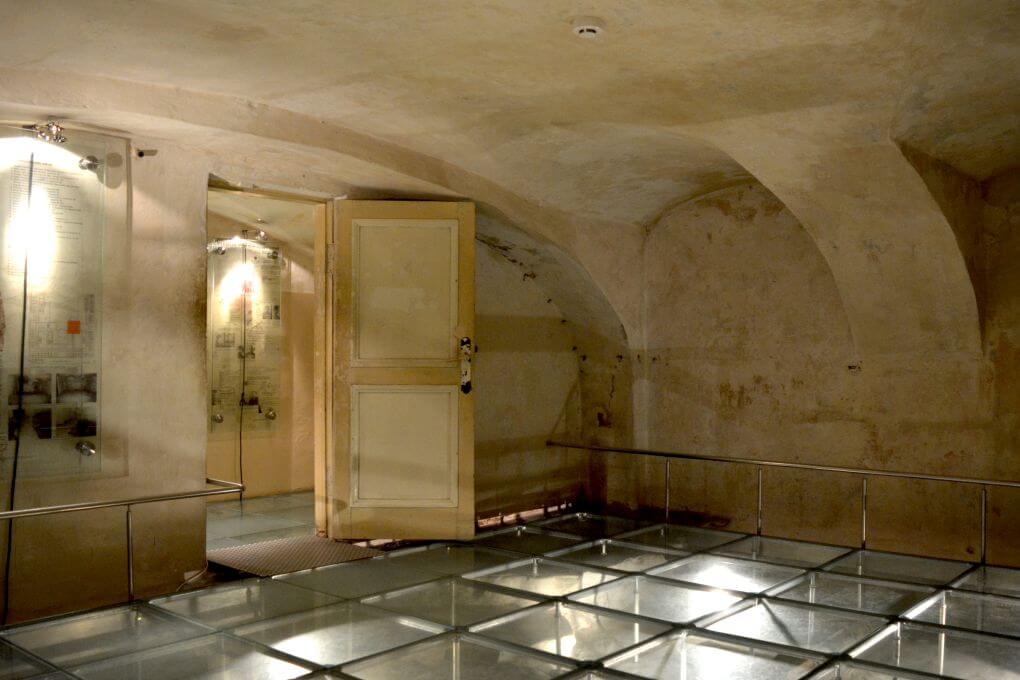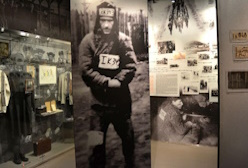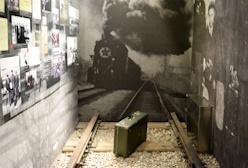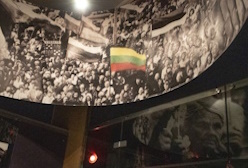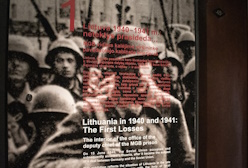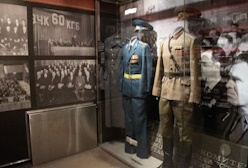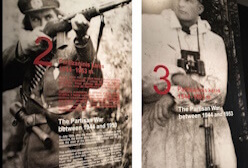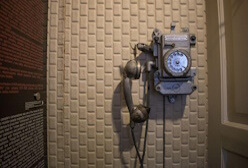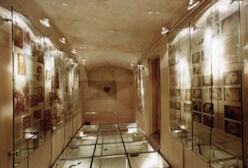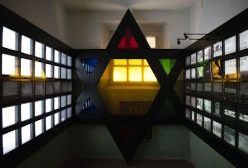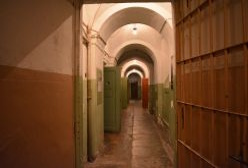The execution chamber
Pupils, students and pensioners (with ID) – 3 €.
Main Information
From 28 September 1944 to 19 June 1969, more than a thousand people were shot in the execution chamber that was set up in the basement of the KGB headquarters. About a third of them were sentenced to death by Soviet courts or the so-called “troika” for their participation in the anti-Soviet resistance.
Very few archival documents about how the death penalty was carried out have survived. It is known that the executions were carried out by a highly classified special group of security officers that belonged to Section “A”. Death sentences were carried out at night. Up to 45 convicts could be executed in a single night. After the execution, the corpses were stacked in the same room behind a wooden partition, and then later taken by lorry to the burial site. The remains of 767 people who were shot in 1944–1947 were buried almost in the centre of Vilnius – in Tuskulėnai.
It is not known for certain where the remains are buried of the people who were shot in 1950–1952, when the death penalty was reinstated in the Soviet Union. There are believed to be numerous unknown grave sites within a 30 km radius of Vilnius.
In the third period, 1956–1969, the remains of those shot were secretly buried in Vilnius Antakalnis Orphans’ Cemetery, among the old graves. Some of them were discovered during archaeological excavations in 2017–2021, including the remains of one of the most prominent partisan commanders, Adolfas Ramanauskas-Vanagas. Investigations are ongoing.
When the execution of death sentences was transferred from Vilnius to Minsk, a carpentry workshop was set up in the execution chamber in the 1970s where KGB building inventory was repaired. The exhibition was opened on 24 June 2000. Items that were found in Tuskulėnai and in the execution chamber itself are on display, as well as photos and documents from archival files and museum collections.
Exposition Location
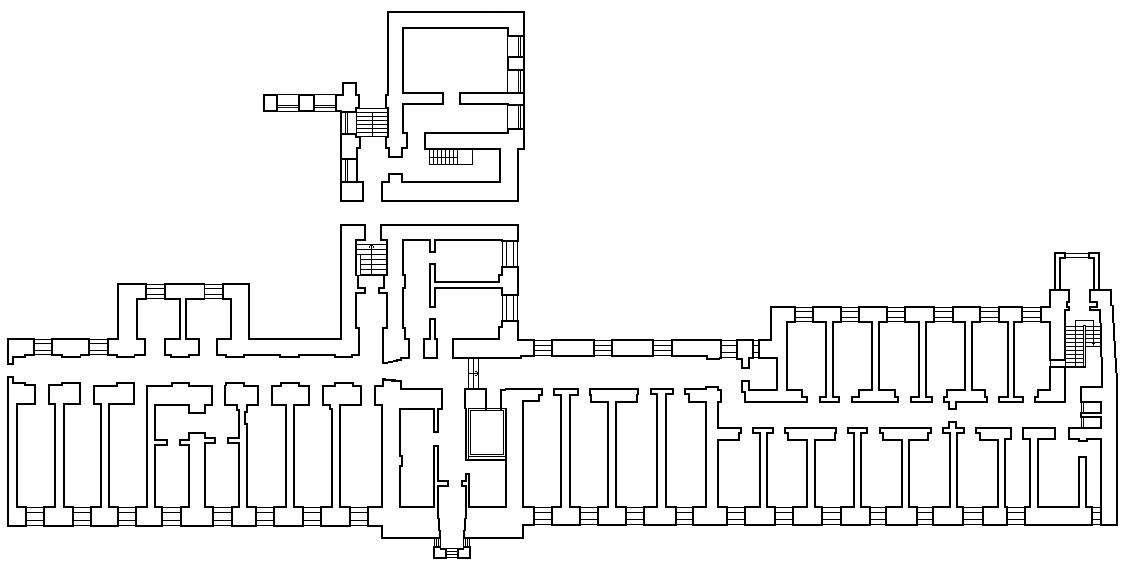
Exposition „The execution chamber“
Location: Underground Floor



